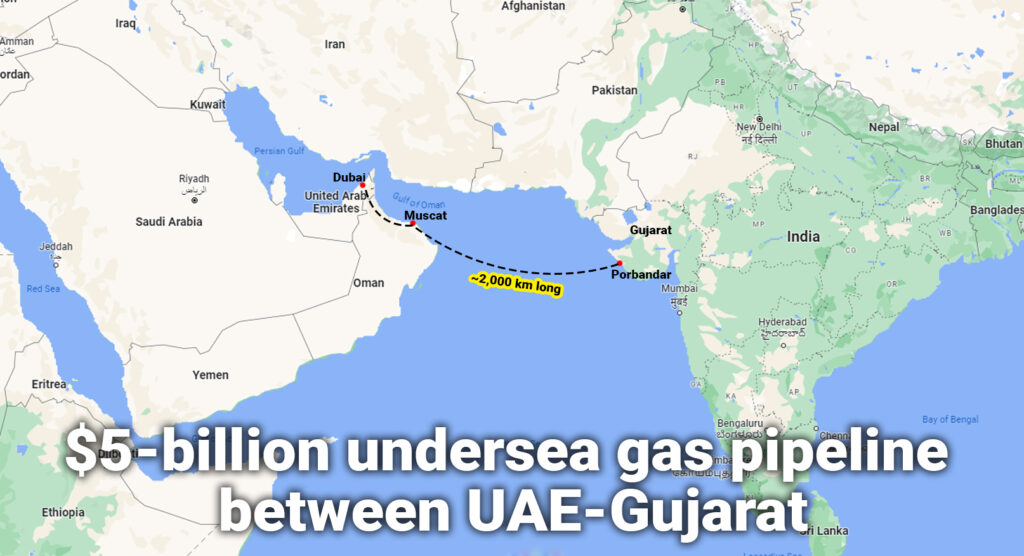
SAGE, an international consortium of companies specializing in deepwater pipeline projects, has requested the assistance of the Ministry of Petroleum and other entities to create an undersea gas pipeline that would be around 2,000 km long from the Gulf region to India. According to SAGE director Subodh Kumar Jain, they have conducted thorough assessments of the project’s technical and financial viability, receiving encouraging feedback from different stakeholders. However, in order to proceed, they now require diplomatic and political backing, as establishing this pipeline necessitates a long-term agreement at the government level.
In the past, the Middle East-India Deepwater Pipeline (MEIDP), a transnational gas pipeline project, was initially proposed between Iran and India’s Porbandar region approximately ten years ago. However, due to the imposition of Western sanctions, the project failed to materialize.
SAGE, an organization backed by the Siddho Mal Group in Delhi and a UK-based deepwater technology company, recently made a presentation to Abu Dhabi National Oil Company’s (Adnoc) gas master planning division in March this year. They highlighted that there have been significant gas discoveries in Oman, the United Arab Emirates (UAE), and Saudi Arabia, and the Middle East is planning to invest over $120 billion to increase gas production by 14 billion cubic feet per day (bcfd) by 2030. SAGE believes that this presents an opportune moment to establish long-term government-level agreements for the pipeline project.
The proposed route for the pipeline is through Oman and the UAE, utilizing the Arabian Sea, in order to avoid politically sensitive areas. This route would provide the option to import gas from multiple countries, including Oman, the UAE, Saudi Arabia, Iran, Turkmenistan, and Qatar, which collectively possess significant gas reserves of 2,500 trillion cubic feet (tcf).
According to SAGE, the demand for affordable gas is increasing in the power and fertilizer industries, while transitioning to a low-carbon economy and aiming to increase the share of gas to 15% in the overall energy mix. This would result in an annual gas demand of 700 mmscmd (million metric standard cubic meters per day) at competitive prices.
Compared to liquefied natural gas (LNG), gas pipelines are more cost-effective for distances up to 2,500-3,000 km due to the high expenses associated with gas liquefaction, transportation, and regasification. SAGE estimates potential savings of $5 to $6 per mmBtu (million British thermal units). Additionally, LNG prices tend to be volatile.
Under a proposed 20-year long-term supply contract, the pipeline aims to deliver 31 million metric standard cubic meters per day (mmscmd) of gas to India. Buyers would be able to purchase gas from the Middle East by paying SAGE a pipeline tariff ranging from $2 to $2.25 per Metric Million British Thermal Unit (mmBtu).